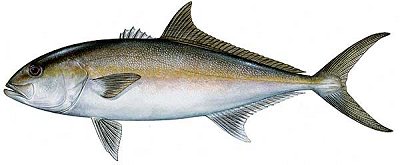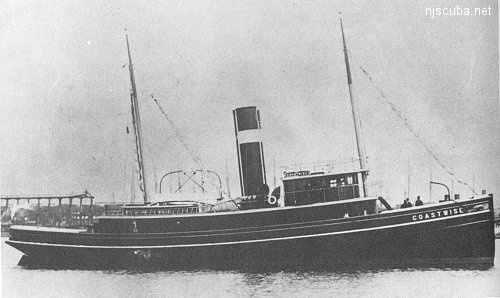Greater Amberjack

Seriola dumerili
Size
to 60" and 175 lbs. in the tropics
Description
The coloration of the greater amberjack is characterized by a dark stripe on the head which extends from the origin of the first dorsal gin through the eye. The back is blue or olivaceous, and the sides and belly are silvery-white. Occasionally there is an amber or pinkish cast to the body. Juveniles have five or six dark vertical bars along the sides.
Greater amberjack are found in the Mediterranean Sea and the Atlantic, Pacific, and Indian Oceans. In the western Atlantic, they are distributed from Nova Scotia to Brazil, including the Gulf of Mexico and the Caribbean, where they concentrate around reefs, rock outcrops, and wrecks. Greater amberjack that are at least 5 years of age, or 33.5 inches long, spawn from March through July. They may reach a size of 6 feet and weigh nearly 200 pounds. Voracious predators, greater amberjacks eat mostly crab, squid, and other fishes found on reefs. They are often found in small groups and are friendly to divers.
Amberjack eat a diet that is very typical of a deepwater, structure-holding fish: crabs, crustaceans, squid, and small fish.
These are active and pretty fish, silvery with yellow stripes. They seem to travel in large schools of small ones led a few larger individuals. It is not difficult to get within spearing range of these fishes, but they have been known to cause ciguatera poisoning if eaten, a little-understood but potentially fatal condition. Lesser Amberjack is similar.

